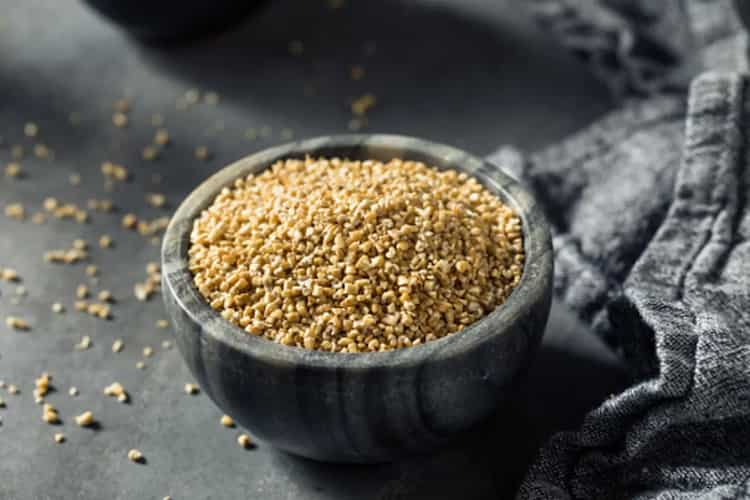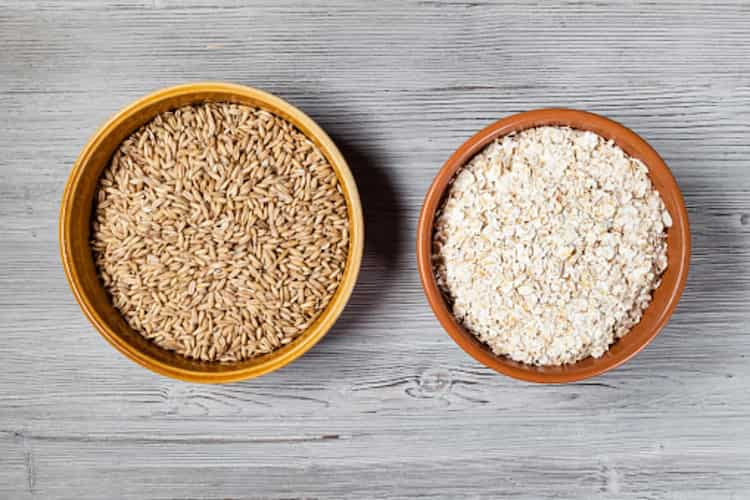Oats are often advised by leading dieticians and nutritionists for a healthier lifestyle. Oats have been dubbed as the ultimate healthy superfood, and they make a delicious and nutrient-dense lunch or snack. Oats have become an everyday partner of every health-conscious individual, as they come loaded with dietary fibres, beta-glucan, and numerous minerals. But you cannot just show up in the market, ask for a packet of oats and expect the magic to happen. Oats are of many kinds, not everyone is familiar with the several types of oats and it is understandable. The terms can get rather overwhelming. Let's have a better insight into various sorts of oats, shall we?
Steel-cut oats/ Irish oats
Steel-cut oats are exactly what they sound like: oats chopped by steel blades. They're created by chopping the whole oat groat into 2-4 pieces using a steel blade. They have a somewhat more chewy texture than whole oat groats. Steel-cut oats take 20-30 minutes to cook on the stovetop, in the slow cooker, or in the instant pot. Steel-cut oats can also be toasted before cooking for a more nuanced flavour.

Whole oat groats
This is the purest, most complete version of the oat grain. The bran, endosperm, and germ have all been retained despite the shell being removed. Out of all the oat variations, this one takes the longest to cook, anywhere from 30-45 minutes. Oat groats have a texture comparable to rice or barley, and they're fantastic in savoury dishes like oat risotto or a grain-based salad. To get the most flavour out of the grains, toast them before adding the liquid. This adds a nutty flavour to a meal, which might help it taste better.

Rolled oats
This is one of the most popular varieties of oats due to its versatility. To make rolled oats, the oat groat is steamed before being rolled flat between steel rollers. Rolling oats come in a variety of thicknesses from different producers, but they are all nutritionally and taste-wise the same. Rolled oats can be used to make stovetop oatmeal, overnight oats, pancakes, baked goods, muesli, granola, granola bars, energy bites, and even smoothies. The best way to cook rolled oats is on the stovetop, which takes around 5-10 minutes.

Oat bran
Oat bran is a byproduct of the oat processing industry. Although it is technically not a whole grain because it is the outer layer of the oat groat, it is nonetheless nutritious due to its high fibre content. It can be added to cereal, made into a hot porridge on its own, or baked into baked items to provide fibre. Although oat bran adds a nutritional boost, be careful how much you use; too much oat bran can change the texture of your finished product.

Quick Oats
Quick oats are a comparable form of oat to rolled oats. They're also steamed, although they're frequently rolled thinner and sliced into smaller pieces, resulting in a larger surface area and hence a shorter cooking time. Because they cook in 1-3 minutes in the microwave, quick oats are ideal for quick meals, baked goods, overnight oats, smoothies, granola, energy bites, and pancakes. Quick oats typically have a mushier texture, so keep that in mind when selecting the right oat for your recipe.

Instant Oats
Instant oats are rolled oats that have been processed the most. They are typically pre-cooked, dried, and then steamed and rolled into smaller pieces. Instant oats are the quickest to prepare, requiring only a brief soak in hot water or a microwave zap to be ready to eat. Instant oats may contain undesired chemicals and sugars because they are commonly seen in processed foods. When buying quick oats, look for nutrition labels that simply state one ingredient: oats. Old-fashioned oats have a mushier texture than instant oats.



